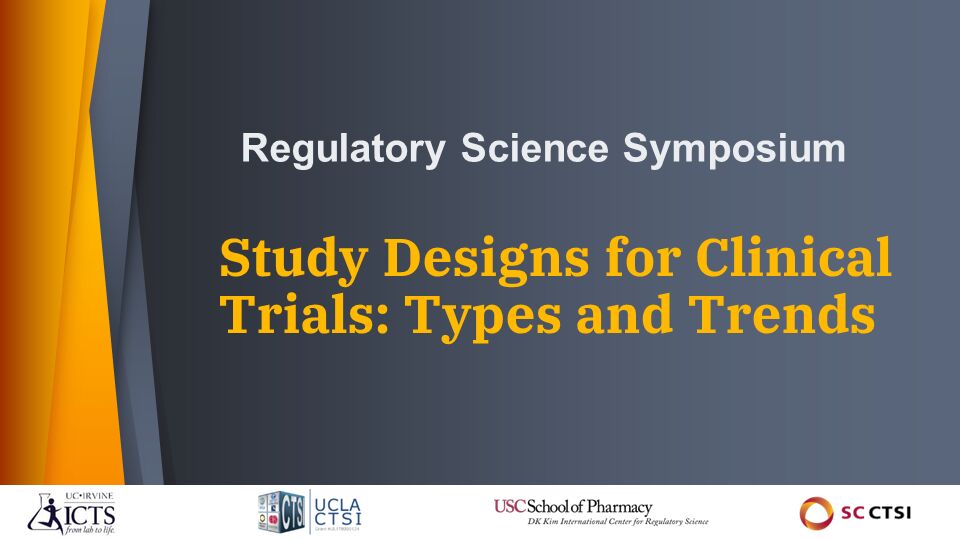- Outline
- Overview of drug development
- Interim analyses and data monitoring committees
- Adaptive clinical trials
- Data monitoring issues specific to adaptive trials
- Other innovative study designs
- Phases of drug development: phase 1
- Includes safety and dosing, First-in-human (FIH) studies, Single Ascending Doses (SAD), M Ascending Doses (MAD), 3+3 Design in oncology
- Phases of drug development: phase 2
- Provide preliminary evidence of a drug’s clinical efficacy and attempt to identify an optimum dose
- Try to find the right dose
- Sample size is chosen to control error rate
- Decision made by comparisons of individual treatment groups
- Decision making:
- Phase 2 trials are typically designed to make decisions
- Decisions made based on statistical hypothesis testing
- Phases of drug development: Phase 3
- Confirmatory trials designed to provide definitive evidence of efficacy and safety
- Benefit-risk analysis
- Increased scrutiny from regulatory agencies
- Incorrect conclusions from Exploratory (Phase I and II) trials put sponsor at risk
- Incorrect conclusions from Confirmatory (Phase III) Trials put the consumer a risk
- Confirmatory trials designed to provide definitive evidence of efficacy and safety
- Single-arm trials
- No internal control but often an external (historical) control
- Terminology: open-label trial vs uncontrolled (single-arm) trial
- Placebo controls and active controls
- The standard for demonstrating efficacy and safety
- Rationale for active controls: placebo unethical, evaluation of comparative efficacy (reimbursement)
- Superiority vs non-interiority with active controls
- Non-inferiority aim to show new treatment no substantially worse than standard treatment
- Interim analyses
- Many phase 3 trials are monitored by an external data monitoring committee (DMC) to protect patient safety
- Group sequential designs allow interim stopping for efficacy or futility
- Require statistical stopping rules that control Type I error rate
- Overview of data monitoring committee
- Some current issues with DMCs
- Program-wide DMCs has a broad overview of safety and efficacy but has potential for efficacy based on “meta-analysis”
- Stopping for futility
- Controversial; Can save resources and lead to early stopping for unexpected harm with respect to efficacy variable
- Adaptive clinical trials
- Adaptive clinical trials
- Allow modifications to the protocol based on interim data (must conform to basic principles)
- Adaptive dose-finding
- Changing sample size based on estimated effect size
- Seamless Phase 2-3 designs
- Changing the focus to a marker-positive subgroup
- Adaptive dose-finding
- Phase 2 trial benefit from more innovative design and analysis approaches
- Change allocation of dose during the process
- Adaptive sample size re-estimation
- Start with a small trial to detect a great big event
- Sample size are calculated to provide adequate power to detect a specific magnitude of treatment effect
- Blinded sample size re-estimation
- Unblinded (adaptive) sample size re-estimation
- Changing focus to a marker-positive subgroup
- Genetic marker may predict which patients will benefit from treatment
- Adaptive approach: interim analysis evaluating if the marker appears to be predictive
- Adaptive trials and DMCs
- Many different types of adaptations (blinded vs. unblinded)
- Some unblinded adaptations fall outside the DMC’s typical responsibilities
- Examples
- Focus on efficacy, not safety
- DMC is the natural group to take responsibility
- Composition of DMC
- Skill requirements may differ from adaptive decision-making
- DMC committees will typically have a statistician but may want someone with specific expertise in adaptive clinical trials
- Long commitment for a seamless phase 2/3 design
- Need for the sponsor involvement
- Some adaptive decisions may be too important or complex for the sponsor to allow to be made by an external committee
- Allowing sponsor to be unblinded may pose risk to trial integrity
- Gallo (2006) recommendations
- Minimal sponsor representation
- Not otherwise involved in trial
- Access to results only at time of adaptation
- Appropriate firewalls to ensure limited access to results
- Some adaptive decisions may be too important or complex for the sponsor to allow to be made by an external committee
- Other innovative design
- Platform trials: investigate multiple drugs in same indication or disease condition
- Basket trials: investigate one drug in multiple indications/subtypes of disease conditions
- The intention-to-treat principle and estimands
- The intention-to treat principle: includes all randomized subjects, complete follow-up regardless of protocol violations, symptom trials (e.g., LDL lowering, pain) vs outcome trials (looking for long-term survival)
- Revision to ICH E9 regarding estimands
- Intercurrent event: something that happens during course of trial which influences the ability to assess outcome
- Require sponsor to define estimand, how intercurrent event handled in analysis and relate to scientific question being posed
- Want to know: Are you interested in treatment policy estimand (corresponds to intention to treat), or some other estimand (e.g., hypothetical estimand)?
- Estimands
- Recent addendum to ICH E9, statistical principles for clinical trials
- Components:
- Population, variable (or endpoint), how to account for intercurrent events, population-level summary
- Intercurrent event
- Event that occurs after treatment initiation and either preclude observation of variable or affects its interpretation
- Recommended estimands:
- Treatment policy strategy, composite strategy, hypothetical strategy, principal stratum strategy
- Questions?
Regulatory Science Virtual Symposium: “Study Design for Clinical Trials: Types and Trends” Session 6: Statistical Challenges of Adaptive and Innovation Study Designs (2023)
Amgen
Course Syllabus/Topics
Acknowledgments
Accompanying text created by Roxy Terteryan, RKS Project Administrator, SC CTSI (atertery@usc.edu) and Cyan Tan, Student Worker

